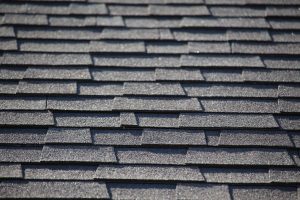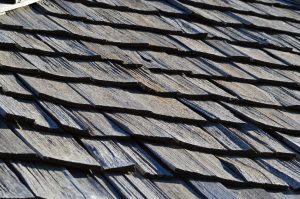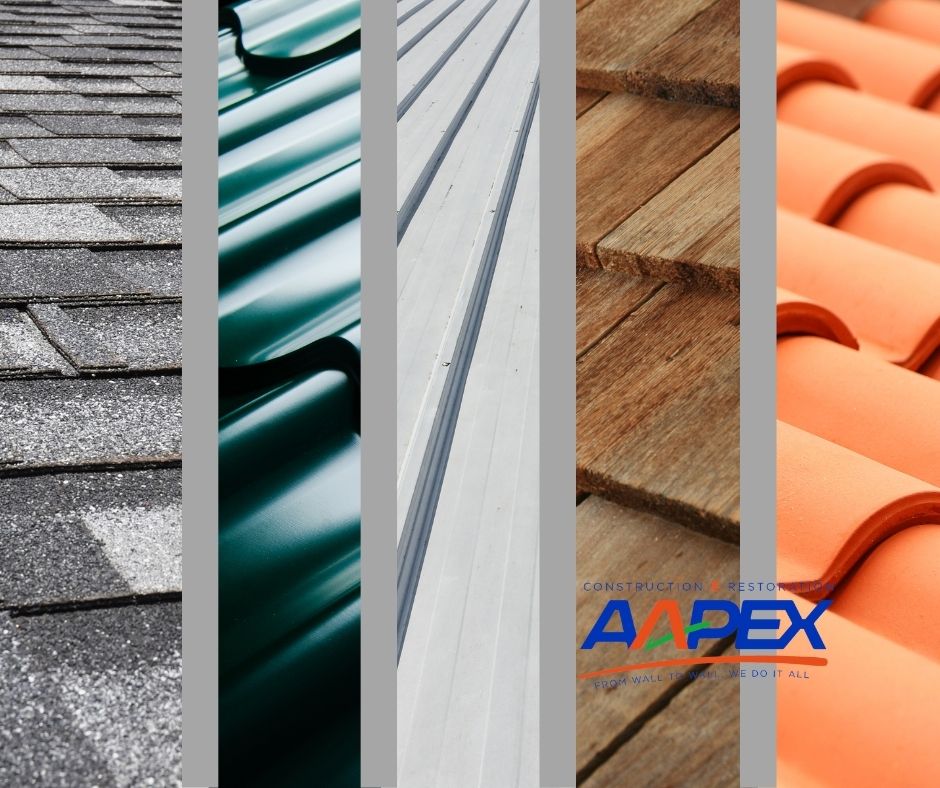A new roof is one of the single most expensive repairs a homeowner expects to make. As you prepare to make this investment in your home, it’s important to get a sense for the available options to determine not only the most appropriate material, but also the one that will last the longest. So which roofing materials have the best life expectancy? Read on to find out.
Composite Asphalt Shingles (15 to 40 years)
 Composite asphalt shingles are by far the most common roofing material used today, installed on more than 80% of all homes. With a base made from either organic materials or fiberglass, these shingles are saturated with asphalt, coated with asphalt, and then the surface is coated with protective mineral or ceramic granules, depending on the desired color of the finished shingle. Asphalt shingles boast many advantages, including being weather, fire, and wind resistant, highly adaptable for a variety of roofing styles, highly durable, and extremely low maintenance. Depending on the quality of the installed shingle, asphalt shingle roofs can last anywhere from 15 to 40 years, with some manufacturers offering guarantees for as long as 50 years.
Composite asphalt shingles are by far the most common roofing material used today, installed on more than 80% of all homes. With a base made from either organic materials or fiberglass, these shingles are saturated with asphalt, coated with asphalt, and then the surface is coated with protective mineral or ceramic granules, depending on the desired color of the finished shingle. Asphalt shingles boast many advantages, including being weather, fire, and wind resistant, highly adaptable for a variety of roofing styles, highly durable, and extremely low maintenance. Depending on the quality of the installed shingle, asphalt shingle roofs can last anywhere from 15 to 40 years, with some manufacturers offering guarantees for as long as 50 years.
The average cost of an installed asphalt shingle roof, depending on several factors including the roof’s pitch and complexity, is around $5 per square foot, with a 2,000 square foot roof costing the homeowner roughly $10,000. The higher quality shingles a homeowner chooses the higher the expense, but the life expectancy will also increase. For many, asphalt shingles prove to be the most cost-effective choice given the material’s life expectancy.
Wood Shingle Roof (25 to 30 years)
 A very attractive option when it comes to roofing materials, wood shingle roofs are gaining in popularity among homeowners because of how well they insulate (both keeping heat in during the winter and out during the summer) and the added dimensional stability they add to a home. Most commonly, wood shingle (or even wood shake) roofs are made from cedar or redwood, both of which are incredibly hard, durable woods that resist swelling and algae growth. The average life expectancy of a wood shingle roof is 25 to 30 years, but a well-maintained roof can last as long as 50 years. Proper maintenance includes replacing split or cracked shingles immediately and keeping the roof free of moss. Regular inspections, especially after storms, are critical for the longevity of wood shingle roofs.
A very attractive option when it comes to roofing materials, wood shingle roofs are gaining in popularity among homeowners because of how well they insulate (both keeping heat in during the winter and out during the summer) and the added dimensional stability they add to a home. Most commonly, wood shingle (or even wood shake) roofs are made from cedar or redwood, both of which are incredibly hard, durable woods that resist swelling and algae growth. The average life expectancy of a wood shingle roof is 25 to 30 years, but a well-maintained roof can last as long as 50 years. Proper maintenance includes replacing split or cracked shingles immediately and keeping the roof free of moss. Regular inspections, especially after storms, are critical for the longevity of wood shingle roofs.
Being slightly more expensive than asphalt shingles, the average cost of an installed wood shingle roof will be anywhere from $6.50 to $11.00 per square foot, depending largely on where your home is located and the type of material you choose. A 2,000 square foot roof will cost, on average, about $18,000. Some regions affected by seasonal wildfires have restrictions in place prohibiting the installation of wood shingle roofs.
Standing-Seam Metal Roof (30 to 50 years)
Standing-seam metal roofs are surging in popularity across the nation, and especially in regions affect by seasonal wildfires. Made from large metal panels – often steel or aluminum, but copper and zinc are also popular options – with raised ridges that run vertically where the seams overlap. Standing-seam metal roofs are extremely durable and require almost no maintenance. Because no fasteners are visible on a standing-seam metal roof, they will not be exposed to the elements that can cause a fastener to wear or breakdown over time. The roof, while protecting your home, also serves to protect itself from the elements. Standing-seam metal roofs are a relatively new product, especially for residential installations, so estimating their life expectancy can be difficult. By conservative estimates, a standing-seam metal roof will last anywhere from 30 to 50 years, but their mechanical properties allow for them to last as long as 75 years.
Standing-seam metal roofs vary significantly depending on which metal is used, seeing average prices of $10 per square foot for steel or aluminum, $13 per square foot for zinc, and $18 per square foot for copper. The difference between these is largely aesthetic. For a 2,000 square foot roof, the average cost of an installed steel panel roof (the most common choice) will be around $22,000. Considering this roof may well last the entire time a person lives in a home, standing-seam metal roofs are often the most cost-effective option, even more so than the more popular asphalt shingle.
Clay Tiles (100+ years)

Popular in the Southwest, clay tile roofs are suitable for any climate due to their durability and strength. Traditionally, clay tiles were made from terracotta clay, but most clay tiles roofs today are made from ceramic or molded, tinted concrete. Clay tile roofs consist of overlapping layers of tiles, creating an extremely durable surface capable of quickly shedding torrential rains as well as withstanding high winds, hail, and even fire. Clay tile roofs are impervious to rot and insects and made from sustainable materials that can be pulverized and recycled when they are removed. Clay tile roofs can last well over a hundred years, with most manufacturers offering 50-year warranties on properly installed roofs. Caution must be taken when replacing an asphalt roof with a clay tile roof to ensure the home’s frame can withstand the weight of the new roof. Most asphalt shingle roofs weight anywhere from 225 to 325 pounds per square foot, whereas clay tile roofs range from 850 to 950 pounds per square foot.
Costs for a clay tile roof vary significantly, depending on the material used for each tile. Concrete tiles cost around $10 per square foot installed, while terracotta can range from $15-$20 and ceramic from $20 to $30. The average cost of installing a traditional Spanish style, clay tile roof is about $20 per square foot, making it about $40,000. While this is easily the most expensive roof material we’ve yet examined, it is easily more cost-effective when you consider that, under normal wear and tear, it will never need to be replaced.
Slate Roof (100+ years)

Another roof made from stone, the shingles for these roofs are made from mined slate that has been hewn into flat slabs. Slate is easily the most durable of all roofing materials, with life expectancies of hundreds of years, if properly maintained. In fact, there are still fully functioning slate roofs that have been around since Queen Elizabeth I’s reign in England (1558-1603). Slate roofs have been nicknamed the “Forever Roof” because they often outlast generations within a family. Offered in a variety of colors, slate roofs are often seen in historic buildings and elegant, luxury homes. Mostly maintenance-free, slate roofs need to be periodically inspected to ensure all flashings are in working order and that all broken tiles are replaced.
Slate roofs are easily the most expensive roofing option, with extreme variations in the cost per square foot, ranging from $10 to $75. Depending on the grade, thickness, and overall quality of the slate tiles, materials alone for a slate roof can cost $5 to $12 per square foot. Installation must be done properly and is labor intensive. With an average cost of $30 per installed square foot of a slate roof, a 2,000 square foot roof will be roughly $60,000, with a life expectancy well beyond the years of any homeowner considering installing a new roof.
While opting for a less expensive roofing material may seem like it’s saving you money, when you consider the life expectancy of the newly installed roof, you may find it is more cost-effective to spend a little more now to save yourself thousands later. Are you weighing your options for your new roof? Contact us today so we can go over the best options for your home.
RELATED ARTICLE: Roofing Underlyament



Everything is clear to me now after reading this article. It provided an understandable topic which I could say that It is worth to read. I appreciate this blog because I was able to learn or gain a lot of information. Great work.